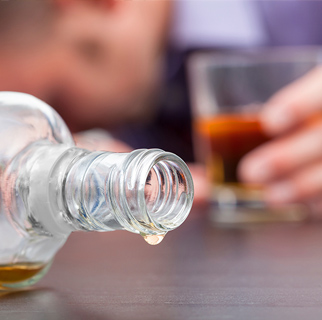College Students and the Dangers of Binge Drinking

On college campuses across the U.S., many students ages 18 to 24 are taking part in a dangerous activity called binge drinking. This means drinking alcohol to the point of getting drunk. For men, it's defined as having 5 or more drinks in a row. For women, it's 4 or more drinks in a row. This amount of drinking produces blood alcohol levels far above the legal driving limit of 0.08%.
College students binge drink at higher rates than young people the same age who don't attend college. Some students go to college with a lot of past drinking experience. For others, college is a time of new freedom. They can engage in drinking and other risky behaviors without parents around. The start of freshman year, in particular, can be a time when a lot of heavy drinking occurs. Also, some colleges may have a culture that is more likely to encourage and support drinking. For example, students tend to drink more at colleges when they live in fraternities or sororities. Drinking rates are also higher at schools with high-profile sports programs.
For students who binge drink, getting drunk is often the main goal. And getting drunk can lead to many other dangers. These include dizziness, loss of coordination, diarrhea, vomiting, lack of judgment, or even passing out. If a person vomits when passed out, they can choke on their vomit. The result can be death.
Researchers looked at the consequences of heavy drinking among college students ages 18 to 24. They found that each year:
-
1,519 college students die from alcohol-related unintentional injuries, including motor-vehicle crashes.
-
696,000 college students are assaulted by another student who has been drinking.
-
An estimated 1 in 5 college students experience sexual assault or date rape. Many of these sexual assaults involve alcohol or other substances.
Host of injuries
According to the CDC, binge drinking leads to accidental injuries. These include motor-vehicle crashes, falls, burns, and drowning. It also includes having the body temperature drop to an abnormally low level. This is even more likely if the binge drinker is outside during winter months. Binge drinkers have a greater risk of:
-
Killing someone
-
Suicide
-
High blood pressure
-
Heart attack
-
Inflammation of the stomach, pancreas, brain, or spinal cord
-
Unsafe sex
-
Sexually transmitted infections
-
Driving under the influence of alcohol
-
Involvement with police
Alcohol poisoning
Each year, thousands of college students end up in the emergency room because of alcohol poisoning. This is when heavy alcohol use affects the central nervous system, slowing breathing and heart rate. It also interferes with the gag reflex. This increases the risk of choking on vomit if the drinker passes out from too much drinking. Blood alcohol levels can keep rising even if a person passes out. If a person who has been drinking a lot is confused, vomits, has a seizure, has pale skin, or passes out, it may be a sign of alcohol poisoning. This is a medical emergency. It can lead to brain damage or death.
Call 911 if a person has any of these serious symptoms of alcohol poisoning:
-
Seizure
-
Vomiting
-
Confusion
-
Unconsciousness
-
Very slow breathing rate
-
Unresponsiveness
Alcohol use disorder (AUD)
Young people who often engage in binge drinking are more likely to develop a drinking problem. About 20% of college students fit the pattern of having alcohol use disorder. This is ongoing drinking that may be accompanied by some of these problems:
-
Not following through on major work, school, or home responsibilities. About 1 in 4 college students report academic problems caused by drinking. These include missing class, falling behind in class, doing poorly on exams or papers, and getting lower grades overall.
-
Drinking in dangerous situations. A person might drink while driving a car or using machinery. A person may be arrested for drunk driving or for physically hurting someone while drunk.
-
Continued drinking, even when it causes problems. The person still drinks, even when having ongoing problems with friends or family because of drinking. These problems are caused or made worse by alcohol.
Alcohol abuse may not always include a very strong craving for alcohol, loss of control, or physical dependence.
Alcoholism
Alcoholism is a term often used for a more severe alcohol use disorder. It is a disease often marked by:
-
Craving. The person has a hunger for or strong need to drink.
-
Loss of control. The person finds it hard to stop drinking once they start. They may be unable to stay away from alcohol or control their drinking.
-
Tolerance. The person needs to drink more alcohol to feel the effects of the alcohol.
-
Less awareness. The person can't see the effects of their continued drinking.
Many people with severe AUD can't stop drinking on their own. They need outside help with their disease.
Recent research has shown that many people may inherit a tendency toward alcoholism. People are also influenced by peers and the availability of alcohol.
Brain development in young adults
Most college students who take part in binge drinking still have developing brains. Brain development can last through age 21 to age 25. This puts these students at greater risk for the poisons and consequences of drinking. Judgment and control are also affected by drinking. Too much binge drinking at a young age can lead to a more dangerous, unhealthy path in the future. It can even be deadly.